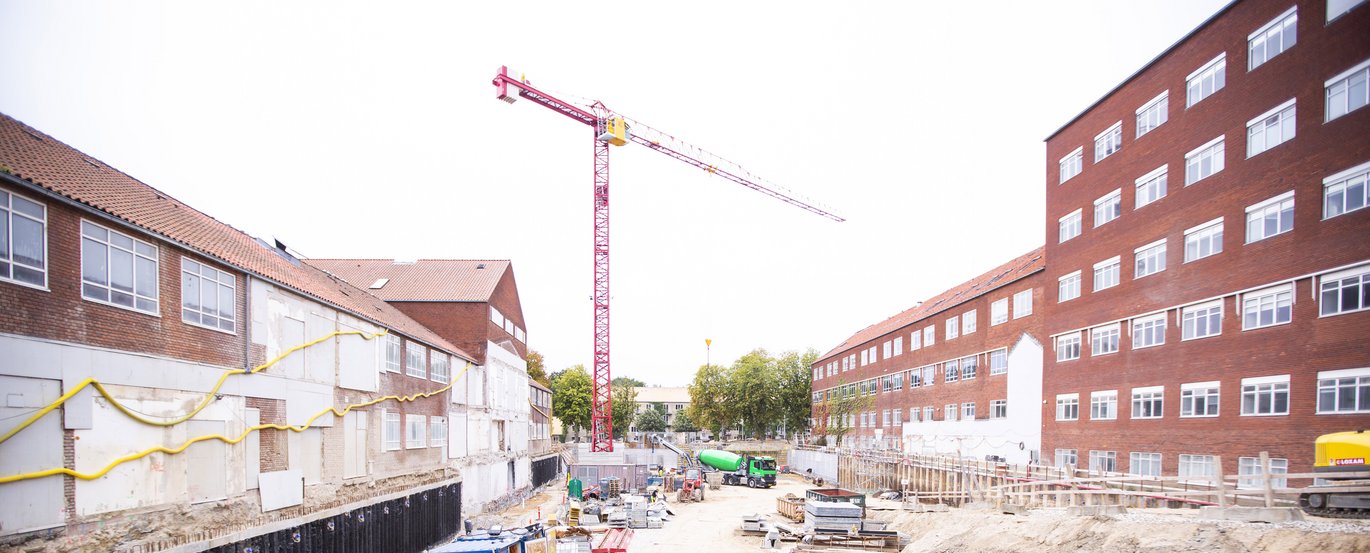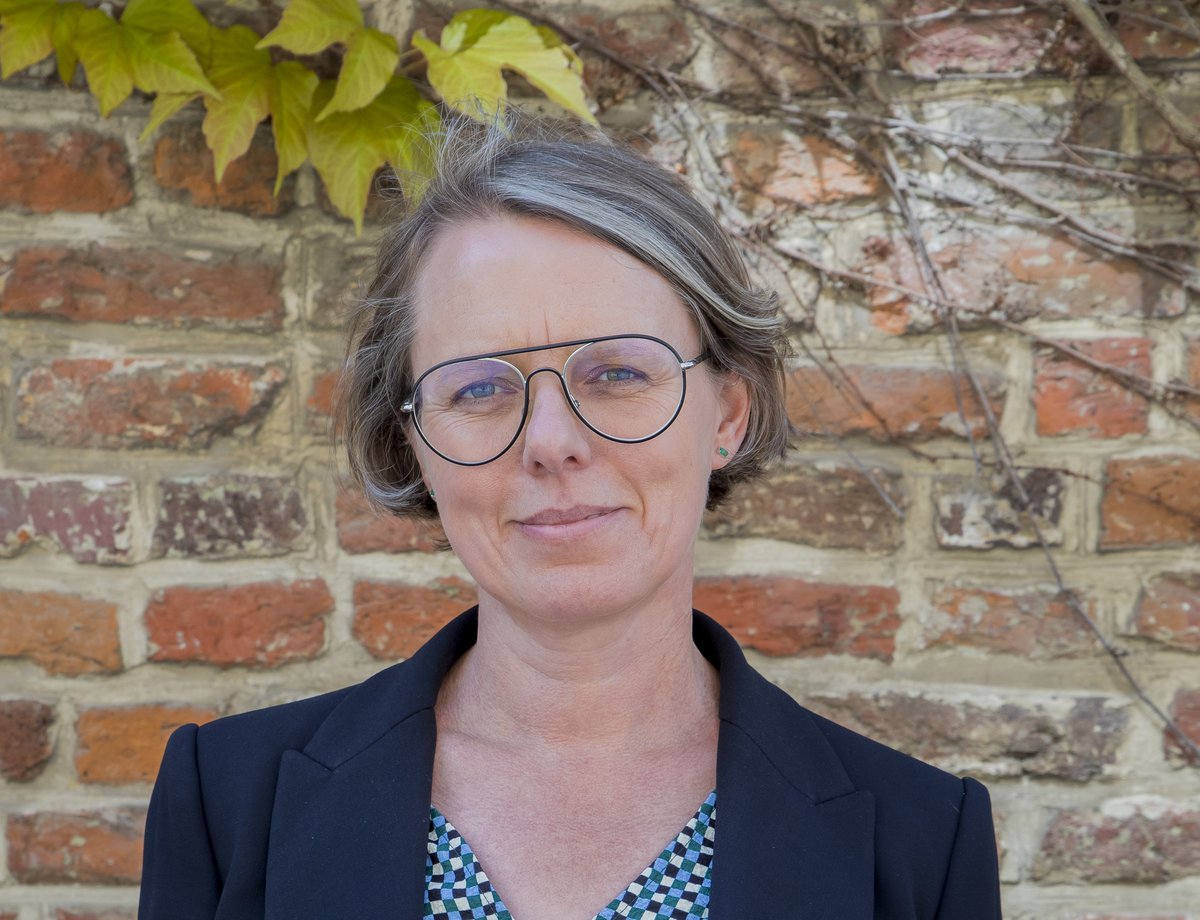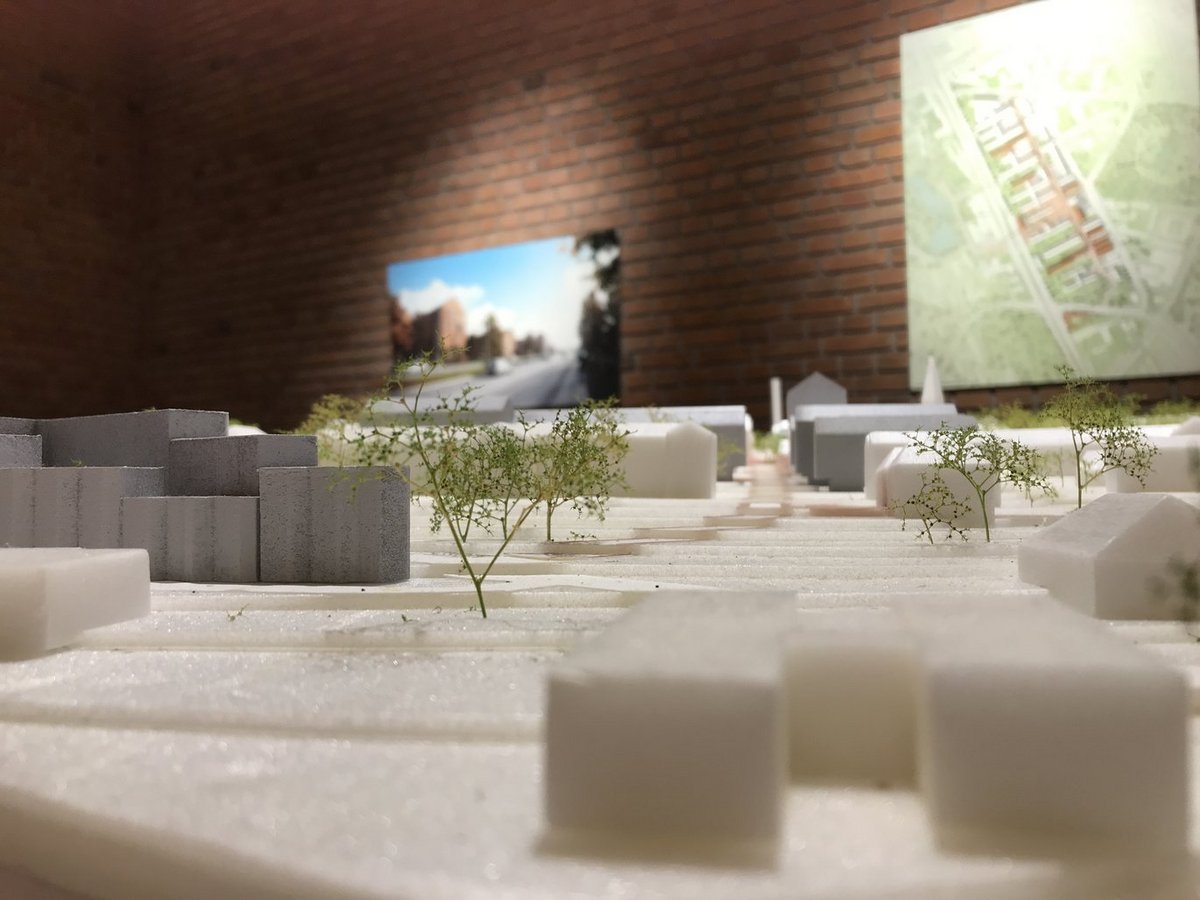Some staff and students have a history with AU’s new campus – and it’s a painful one
Until recently, Aarhus University’s new campus, University City, was a hospital. This means that some staff and students have had to say goodbye to loved ones in the very buildings that will now get a new lease of life as a university campus. One of these is Associate Professor Javette Koefoed, who calls for us to acknowledge that, for some, the new campus evokes painful memories.

Nina Javette Koefoed is an associate professor in history at the School of Culture and Society at Aarhus University. Her office is on the fifth floor of Nobel Park and has an exquisite view of Aarhus and the surrounding bay. But she avoids looking at some of this panorama. The red buildings, which until recently housed the former Aarhus Municipal Hospital, and which are now being repurposed to serve as AU’s new University City campus, are difficult for her to face. Because she has a long history with these buildings.
“It’s been ten years since I lost my husband. He died of cancer in that hospital, and before that he was ill for seven years,” she explains. Her children were seven and twelve when they lost their father.

Difficult emotions stirred up
Nina Javette Koefoed recently attended a course at the Heimdal building in the University City, which stirred up difficult emotions for her. The building was previously used by the Danish Cancer Society to provide counselling and support to cancer patients and their relatives, but it is now a conference centre. Nina Javette Koefoed and her family often used the centre; her daughter even attended a grief support group there. So she knew it might be difficult to step into the same building ten years later.
“But it was actually more difficult that I expected. My body was sent back to a period of my life characterised by grief, anger, adrenaline, vigilance and panic – and these feelings were reactivated,” she explains. She describes her feelings as exhausting and misplaced in a professional context – and certainly not conducive to learning.
The site is associated with grief
Before the course, Nina Javette Koefoed decided to share her thoughts, including on Twitter. Because she knew she wasn’t alone.
“I think the university needs to consider the effect that these buildings may have on students and staff that have a painful connection to the site,” she says.
Nina Javette Koefoed has had concerns about the new site since the AUFF’s property company purchased it from Central Denmark Region in 2016 in order to rent much of it to Aarhus University. She has feared that some staff and students would find it difficult to work in the buildings because they had said goodbye to loved ones there – or perhaps undergone a course of treatment there, given that the hospital was operational until only a few years ago. In 2025, all 5,000 students and 600 members of staff at Aarhus BSS will move from Fuglesangs Allé to the University City. Among these students is Nina Javette Koefoed’s daughter, who now studies at Aarhus BSS.
“She is already worried about what it will be like. I know that I would find it very difficult to have an office there, especially in the high-rise building,” she says, referring to the building in which her husband underwent much of his treatment and eventually died.
“I’m actually not even sure I would be able to.”
Acknowledgement and respect
With this in mind, she has been trying to think what could make it easier for staff and students who have painful memories associated with the new campus.
“First and foremost, it’s about acknowledging that some people will find it difficult to be in certain buildings or rooms and having a strategy to deal with this. This could be in connection with a supervision or an exam, for example. In these situations, it should be legitimate for a student to say: “I find it difficult to be in this building” – and then the university needs to have a plan for how to handle this from an administrative point of view.
Nina Javette Koefoed believes there should be a transitional phase when the new campus opens, during which it is recognised that the new buildings may be novel and exciting for some, but, for others, they are associated with grief and a reluctance to revisit the former hospital site.
“Perhaps it would be a good idea to arrange a support group so that people can discuss how they feel about working or studying in the old hospital buildings,” she suggests.
In addition, Nina Javette Koefoed believes it’s important to respect the history that the site represents. In her opinion, the repurposing of the chapel in which she said goodbye to her husband does not demonstrate this respect. The chapel is now full of visualisations and models of the new campus.
“As a bereaved relative, I think this is disrespectful. I think the university should have considered turning this space into a memorial in order to tell the story of the former buildings and to explain that people have died here,” she says.

Grief researcher: The university must address the history of the new site
Professor Maja O’Connor is the head of Aarhus University’s unit for grief research and confirms that specific places can become associated with grief and can trigger an emotional reaction – even after a lot of time has passed.
“This is something we’ve seen in more complicated grief processes in particular. But we also see it in cancer patients, where former patients vomit if they return to the place they were given chemotherapy – of feel sick simply by looking at the purple-red colour of the chemical fluid. When we have experienced something poisonous, we continue to react to this poison throughout our lives,” says Maja O’Connor.
However, she points out that this reaction usually subsides over time at that, eventually, the individual is able to manage it. Based on this, she also believes that the problem with the new campus will be greatest when it first opens.
In general, Maja O’Connor thinks it should be possible to use former hospital buildings for a new purpose. But she stresses that, if the university chooses to rebuild on a site with which many people have a personal history (for better or worse), the university – as a place of work and study – must recognise that this may be difficult for some students and members of staff.
“You can do this quite easily by acknowledging that this is a place of particular significance with a particular history whenever you write about the new campus. Or, whenever there is a conference at the new site, you could address the fact that the conference is taking place in a room in which many tears have been shed through both joy and sadness, and that this may apply so some of those present,” she says.
She emphasises that the former chapel represents a particularly sensitive place, where recognition and respect should be shown explicitly, for example in the form of an inscription. This would remind those present that the room should be used with the greatest of respect and humility for those who have died there.
FEAS: We do not intend to hide the history of the buildings
Jørgen Lang, administrative director of FEAS, underlines that, in its endeavour to convert the former hospital into a university campus, the company is aware that the buildings represent a particular and historic place to which most of Aarhus has a connection.
“I also understand that, for some, the site can evoke painful memories: especially for those who have experienced loss there. And I recognise that the body has an ability to remember places and buildings that are connected to a violent or sad event. In our renovation and conversion, we do not intend to hide or forget the history of the buildings. On the contrary, we are keen to preserve it,” he says.
Just how they will do this in practice has not yet been decided, explains Jørgen Lang, who sees nothing wrong with the current use of the former chapel.
“I don’t think it’s disrespectful to use the building as a visitors’ centre,” he says, comparing it to when a church ceases to be a religious site.
“It doesn’t change the history of the church, and therefore the building can be given a new life with respect for that history,” he says.
Jørgen Lang also agrees that the Heimdal conference centre is a place of particular significance with a particular history. But he does not believe that this history gives us occasion to change the building’s current use as a conference centre.
Senior management team: It’s important to respect the past
The senior management team is also aware that some staff and students may have painful emotions and memories associated with the buildings that will soon become the University City.
“It is important that the senior management team respects the past of the university’s buildings. Not only in the University City but also across AU more generally, where many buildings have a history. An example of this is the Victor Albeck Building, which used to be a maternity clinic. The history of this building has been preserved and marked with pictures and accounts from the time”, writes Lisbeth Katborg Bjerre, head of staff at the Rector’s Office, in an email.
She explains that the senior management team has not yet decided how it will mark the history of the buildings in the University City.
“But the team is grateful that this issue has been raised, because it is important to acknowledge the emotions that the buildings can stir up among those who are due to work there in the future”.
Lisbeth Katborg Bjerre points out that both current and future students can reach our to the university’s student counsellors. Members of staff are welcome to contact their line managers if they wish to discuss particular issues regarding the previous use of the buildings.
Union representatives: Come to us if you’re concerned
At Aarhus BSS – which, as mentioned above, will move all its departments to the University City in 2025 – union representative Karina Skovvang Christensen has not yet been contacted by members of staff who are concerned about relocating to the site of a former hospital. She is an associate professor at the Department of Economics and Business Economics and represents members of academic staff as well as members of administrative staff with an academic background (DJØF).
“But it’s good that we are aware that some people may find it difficult to return to a site that was once a hospital. And, if people are finding it difficult, it’s good that they come and tell us, so that we can do something about it.”
This opinion is shared by Bjarne Rerup Schlichter, who is an associate professor at the Department of Management and union representative for members of academic staff at the department (DJØF). He is also yet to be contacted by anybody worried about the move. The same applies to Caroline Adolphsen, who is a joint union representative (DJØF) and an associate professor at the Department of Law.
“But I think it’s good that we keep this issue in mind. And I would encourage members of staff to contact their union representative and students to contact the Student Counsellors’ Office if they are worried about relocating to the site of the former hospital,” says Caroline Adolphsen.

